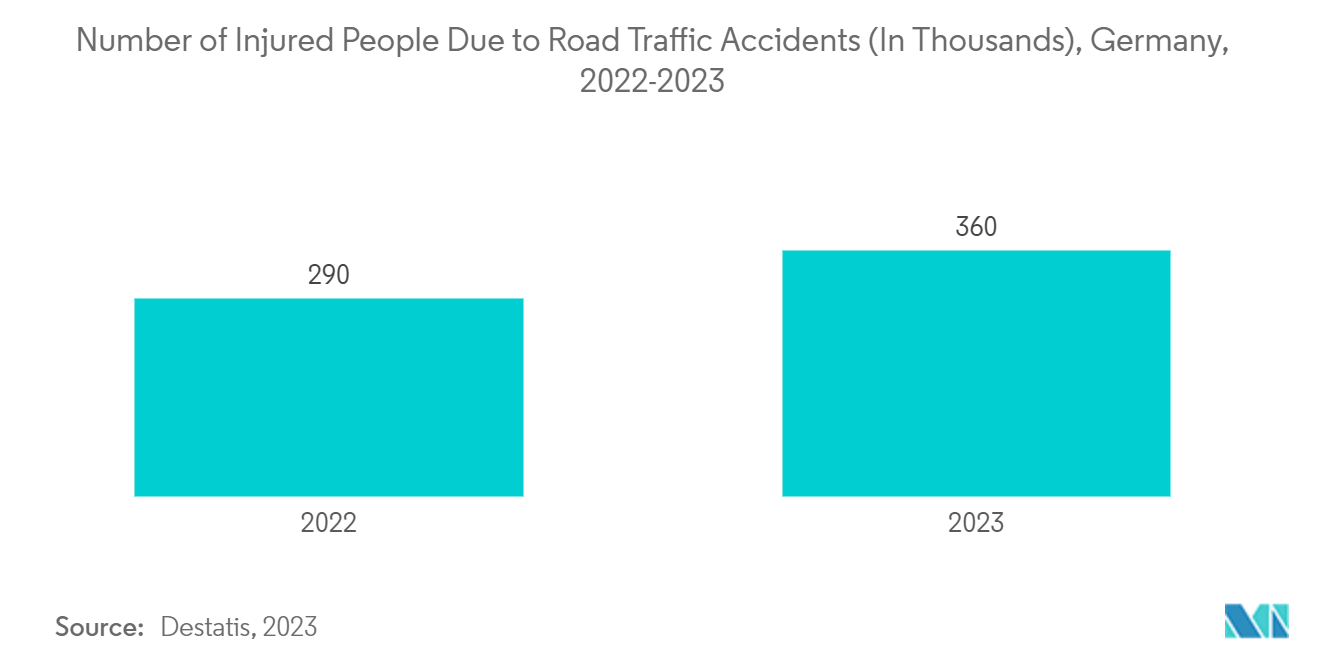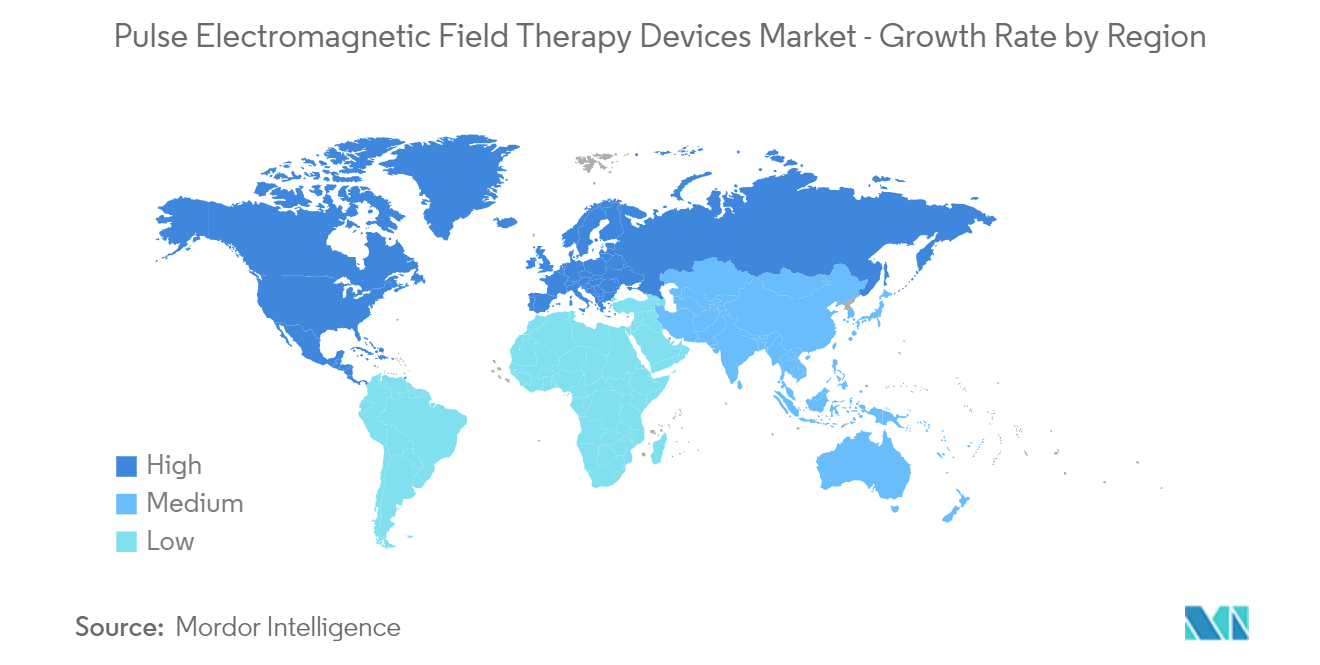Market Trends of Pulse Electromagnetic Field Therapy Devices Industry
The Hospitals and Clinics Segment is Expected to Hold a Significant Market Share
Pulse electromagnetic field therapy devices are mainly used in hospitals and clinics for patient recovery. The rising incidences of fractures due to accidents, sports injuries, falls from a certain height, and indications such as knee pain, joint pain, and arthritis are factors that drive the segment's growth.
For instance, as per the Sports Accident Statistics report updated by LegalMatch in August 2022, injuries to the anterior cruciate ligament (ACL) occur roughly 150,000 times every year in the United States. In addition, female basketball and soccer players had an ACL injury 2 to 8 times more frequently than other athletes. This prevalence of a high number of sports-related injuries in the region is expected to boost the demand for soft PEMF devices in hospitals and clinics.
Additionally, in May 2022, a study published in Acta Orthopedica Brasileira, the highest injury rates were in men’s indoor soccer (8.75 per 1,000 athlete exposure), men’s basketball (8.72 per 1,000 athlete exposure), and rugby (8.45 per 1,000 athlete exposure), with the increase in players in these sports, the injury rates will increase thus boosting the adoption of pulse electromagnetic field therapy devices and further contribute to the market growth.
Thus, the rising prevalence of accidents and sports injuries is expected to boost the segment's growth during the forecast period.

North America is Expected to Hold a Significant Share of the Market During the Forecast Period
The rising number of patients experiencing osteoporosis and osteoarthritis is projected to boost the demand for pulse electromagnetic field therapy devices in the region. Also, the rising sports injuries in the region and the increasing presence of key market players are expected to boost the market's growth in North America.
For instance, according to an article published by OTA International in June 2022, around 53 million Americans either carry a diagnosis of osteoporosis or are at risk for fracture due to decreased bone mass. Thus, the high prevalence of osteoporosis is expected to boost the usage of PEMF therapy devices.
The region's high prevalence of collisions and sports injuries is also expected to boost the market's growth. For instance, according to the data published in the Johns Hopkins Medicine journal in February 2023, about 30.0 million children and adolescents engage in organized sports, resulting in over 3.5 million injuries reported yearly in the United States. Thus, the high prevalence of sports injuries among adolescents boosts the need for pulse electromagnetic field therapy devices and drives the market growth in the region.
Similarly, according to an article published by SpringerLink in September 2022, a study was conducted in Canada, which showed a high rate of injuries among collision sport participants in Canadian high schools. The rates of injuries ranged from 12.7 injuries per 100 participants every year in rugby to 33.1 injuries per 100 participants every year in ice hockey. The prevalence rate for injuries to the head was 33.3%, 16.0% for the wrist or hand, 12.8% for the shoulder, and 12.0% for the knee. Thus, the region's high prevalence of collisions and sports injuries is expected to boost the adoption of PEMF therapy devices.
The increasing developments by key players are also enhancing the market's growth. For instance, in December 2023, Orthofix Medical Inc., a US company, published data that supports the utilization of pulse electromagnetic field (PEMF) stimulation as an adjunct therapy to lumbar spinal fusion procedures in patients with a risk of pseudarthrosis.
Thus, factors such as the rising prevalence of osteoporosis, the increasing collisions and sports injuries, and the key developments by market players are expected to boost the market's growth in North America.


